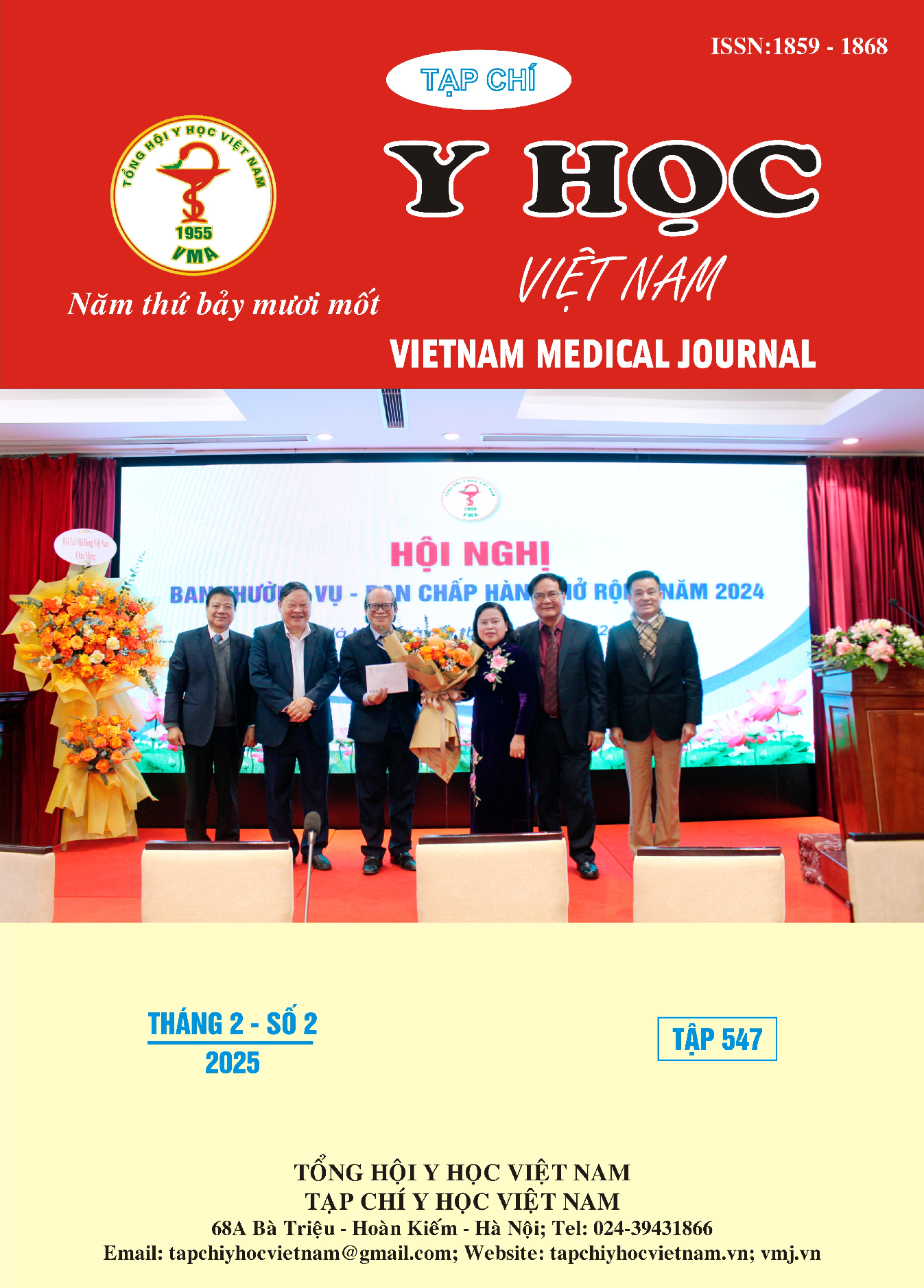SO SÁNH KẾT QUẢ PHẪU THUẬT LẤY THOÁT VỊ ĐĨA ĐỆM L5S1 BẰNG GIẢI ÉP VI PHẪU VÀ NỘI SOI GIAN LAM TẠI BỆNH VIỆN VIỆT ĐỨC
Nội dung chính của bài viết
Tóm tắt
Mục tiêu: So sánh kết quả phẫu thuật giải ép vi phẫu và nội soi gian lam cho bệnh nhân thoát vị đĩa đệm L5S1 ở Bệnh viện Hữu nghị Việt Đức. Phương pháp nghiên cứu: Nghiên cứu mô tả hồi cứu với 106 bệnh nhân chia thành 2 nhóm: Nhóm I: 48 bệnh nhân thoát vị đĩa đệm L5S1 được giải ép, lấy thoát vị L5S1 vi phẫu, Nhóm II: 58 bệnh nhân thoát vị đĩa đệm L5S1 được nội soi gian lam lấy thoát vị tại Bệnh viện Việt Đức từ tháng 6/2021 – tháng 6/2022 với thời gian theo dõi trong 2 năm. Kết quả: Không có sự khác biệt về đặc điểm tuổi, giới và đặc điểm thoát vị đĩa đệm trên cộng hưởng từ của 2 nhóm nghiên cứu. Nội soi gian lam có hiểu quả lâm sàng ngắn hạn tốt hơn đáng kể so với giải ép vi phẫu (VAS, MacNab) nhưng không có sự khác biệt về hiệu quả dài hạn của 2 phương pháp này. Thời gian nằm viện của các bệnh nhân nhóm nội soi gian lam ngắn hơn đáng kể có ý nghĩa thống kê so với nhóm giải ép vi phẫu (p<0,001). Tỉ lệ biến chứng nhiễm trùng, mổ lại, rách màng cứng ở nhóm nội soi gian lam cũng thấp hơn so với nhóm giải ép vi phẫu. Không có sự khác biệt quá lớn về tỉ lệ tái phát của các bệnh nhân ở hai nhóm. Kết luận: Phẫu thuật nội soi gian lam có ưu điểm hơn so với phẫu thuật mổ mở giải ép vi phẫu lấy thoát vị đĩa đệm vì đường mổ nhỏ, ít tàn phá cấu trúc nên gần như không mất máu, thời gian nằm viện ngắn hơn, giảm đau ngay sau mổ tốt hơn, ít biến chứng trong mổ và sau mổ hơn, do đó bệnh nhân hài lòng hơn. Tuy nhiên về kết quả dài hạn, cả phẫu thuật nội soi gian lam và phẫu thuật mổ mở giải ép lấy thoát vị đĩa đệm đều không có sự khác biệt đáng kể.
Chi tiết bài viết
Từ khóa
thoát vị đĩa đệm cột sống thắt lưng, giải ép vi phẫu lấy thoát vị đĩa đệm, nội soi gian lam lấy thoát vị đĩa đệm
Tài liệu tham khảo
2. F. U. Hermantin, T. Peters, L. Quartararo & P. Kambin (1999), "A prospective, randomized study comparing the results of open discectomy with those of video-assisted arthroscopic microdiscectomy", The Journal of bone and joint surgery. American volume, 81(7): p. 958-65.
3. J. C. Maroon (2002), "Current concepts in minimally invasive discectomy", Neurosurgery, 51(5 Suppl): p. S137-45.
4. Phan K, Mobbs RJ. Minimally invasive versus open laminectomy for lumbar stenosis a systematic review and meta-analysis. Spine. 2016;41(2):E91-E100.
5. Nerland US, Jakola AS, Solheim O, et al. Minimally invasive decompression versus open laminectomy for central stenosis of the lumbar spine: Pragmatic comparative effectiveness study. BMJ. 2015;350(apr01 1):h1603-h1603.
6. George J. Dohrmann, Nassir Mansour, et al. “Long-term results of various operations for lumbar disc herniation: Analysis of over 39,000 patients”. Med Princ Pract. 2015 May; 24(3): 285-290.
7. Liu L, Xue H, Jiang L, et al. Comparison of Percutaneous Transforaminal Endoscopic Discectomy and Microscope-Assisted Tubular Discectomy for Lumbar Disc Herniation. Orthop Surg. 2021;13(5):1587-1595
8. Arts MP, Peul WC, Koes BW, Thomeer RTWM. Management of sciatica due to lumbar disc herniation in the Netherlands: A survey among spine surgeons. J Neurosurgery Spine 2008; 9:32-39.
9. Hoffman RM, Wheeler KJ, Deyo RA. Surgery for herniated lumbar discs: A literature synthesis. J Gen Intern Med 1993; 8:487-496.
10. Sung Kyu Song, Seong Son, Sun Woo Choi, Hwi Kyung Kim. Comparison of the outcomes of percutaeous endoscopic interlaminar lumbar disectomy and open lumbar microdiscectomy at the L5-S1 level. Pain Physician 2021; 24:E467-E475 • ISSN 2150-1149.


